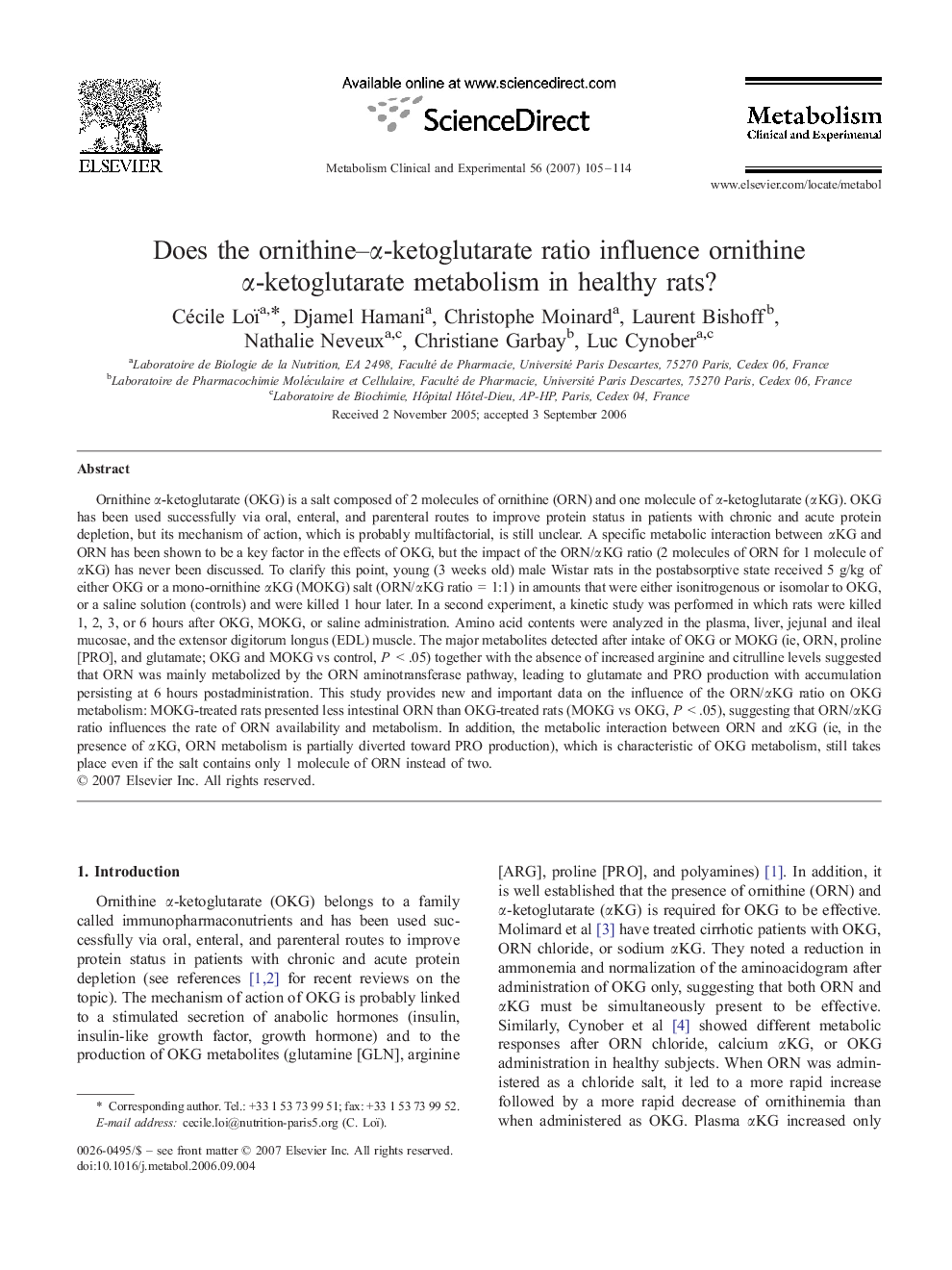| Article ID | Journal | Published Year | Pages | File Type |
|---|---|---|---|---|
| 2807564 | Metabolism | 2007 | 10 Pages |
Ornithine α-ketoglutarate (OKG) is a salt composed of 2 molecules of ornithine (ORN) and one molecule of α-ketoglutarate (αKG). OKG has been used successfully via oral, enteral, and parenteral routes to improve protein status in patients with chronic and acute protein depletion, but its mechanism of action, which is probably multifactorial, is still unclear. A specific metabolic interaction between αKG and ORN has been shown to be a key factor in the effects of OKG, but the impact of the ORN/αKG ratio (2 molecules of ORN for 1 molecule of αKG) has never been discussed. To clarify this point, young (3 weeks old) male Wistar rats in the postabsorptive state received 5 g/kg of either OKG or a mono-ornithine αKG (MOKG) salt (ORN/αKG ratio = 1:1) in amounts that were either isonitrogenous or isomolar to OKG, or a saline solution (controls) and were killed 1 hour later. In a second experiment, a kinetic study was performed in which rats were killed 1, 2, 3, or 6 hours after OKG, MOKG, or saline administration. Amino acid contents were analyzed in the plasma, liver, jejunal and ileal mucosae, and the extensor digitorum longus (EDL) muscle. The major metabolites detected after intake of OKG or MOKG (ie, ORN, proline [PRO], and glutamate; OKG and MOKG vs control, P < .05) together with the absence of increased arginine and citrulline levels suggested that ORN was mainly metabolized by the ORN aminotransferase pathway, leading to glutamate and PRO production with accumulation persisting at 6 hours postadministration. This study provides new and important data on the influence of the ORN/αKG ratio on OKG metabolism: MOKG-treated rats presented less intestinal ORN than OKG-treated rats (MOKG vs OKG, P < .05), suggesting that ORN/αKG ratio influences the rate of ORN availability and metabolism. In addition, the metabolic interaction between ORN and αKG (ie, in the presence of αKG, ORN metabolism is partially diverted toward PRO production), which is characteristic of OKG metabolism, still takes place even if the salt contains only 1 molecule of ORN instead of two.
